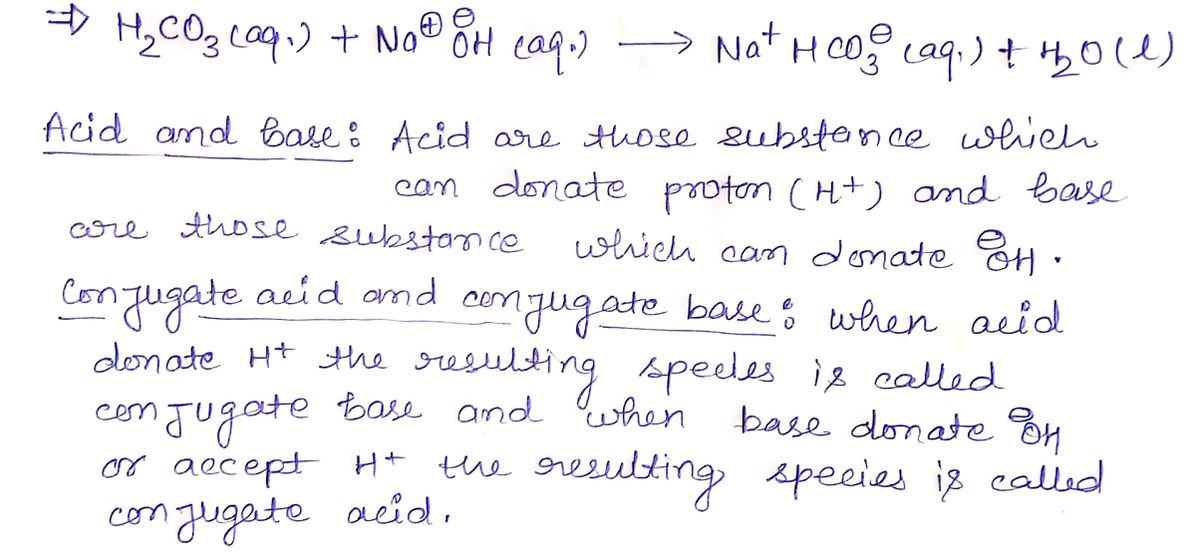An important part of acid/base chemistry is neutralization, or when an acid or a base is completely used up during a reaction. Assume the reaction below goes to completion. + NaOH(aq) H₂CO3(aq) Nat is a alkali ion acid base conjugate base conjugate acid →→→>> Na+ HCO3( (aq) OH is the H₂CO3 is the , HCO3 is the + H₂O and H₂O is the There is a 1:1 stochiometric ratio between NaOH and H₂CO3. Therefore, if we have 5 moles of NaOH, we need 5 moles of H₂CO3 for neutralization.
Ionic Equilibrium
Chemical equilibrium and ionic equilibrium are two major concepts in chemistry. Ionic equilibrium deals with the equilibrium involved in an ionization process while chemical equilibrium deals with the equilibrium during a chemical change. Ionic equilibrium is established between the ions and unionized species in a system. Understanding the concept of ionic equilibrium is very important to answer the questions related to certain chemical reactions in chemistry.
Arrhenius Acid
Arrhenius acid act as a good electrolyte as it dissociates to its respective ions in the aqueous solutions. Keeping it similar to the general acid properties, Arrhenius acid also neutralizes bases and turns litmus paper into red.
Bronsted Lowry Base In Inorganic Chemistry
Bronsted-Lowry base in inorganic chemistry is any chemical substance that can accept a proton from the other chemical substance it is reacting with.

![There is a 1:1
between NaOH and H₂CO3. Therefore, if we have 5 moles of
NaOH, we need 5
moles of
H₂CO3 for neutralization.
If we have 5 mL of 1 M NaOH and add 2.5 mL of 2 M H₂CO3,
the acid is in excess
and is therefore
not neutralized
If we have 10 mL of 0.1 M NaOH and add 16 mL of 0.05 M
H₂CO3, the acid is equal moles to the base
therefore neutralized
✓[Select
If we have 2 mL of 5 M NaOH and add 5 mL of 3 M H₂CO3,
the acid is [Select]
and is therefore
neutralized
not neutralized
Overall
Reaction:
Molecular
Weight (g/mol):
Na2CO3(aq)
105.99
stochiometric ratio
+ HCl (aq)
36.46
-
and is
NaHCO3(aq) + NaCl(aq)
84.001
58.44
ㅏ
G](/v2/_next/image?url=https%3A%2F%2Fcontent.bartleby.com%2Fqna-images%2Fquestion%2F84577f47-6855-4e4f-91d0-241ebc051b86%2F5fec35ca-8e0a-4dfe-834b-bd36c7fb6d15%2Fk6x93ys_processed.jpeg&w=3840&q=75)

Step by step
Solved in 5 steps with 5 images









